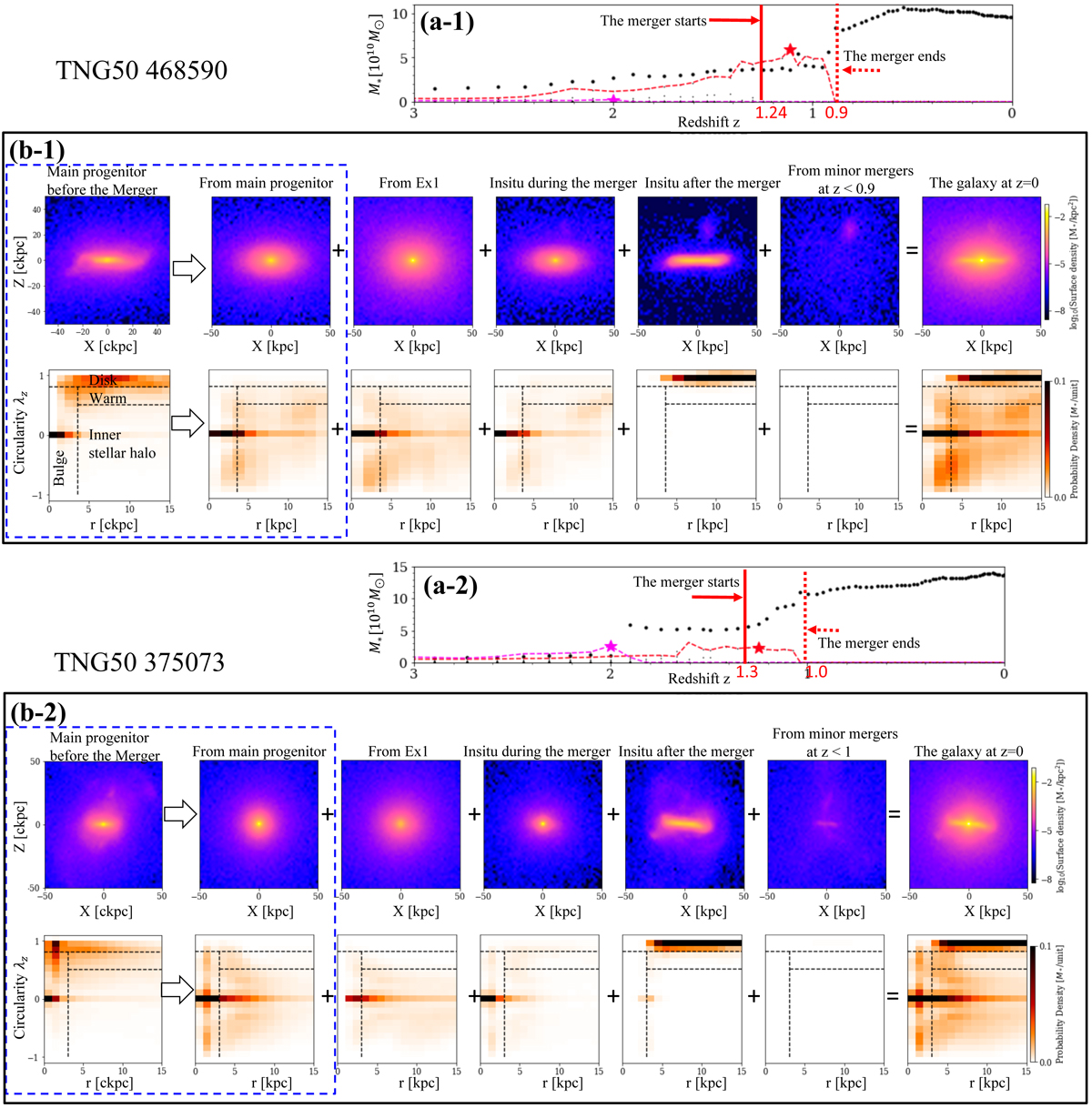Fig. 10.

Download original image
Formation of the hot inner stellar halo in TNG50 468590 (a-1 and b-1; TNG50 468590 is the same galaxy as illustrated in Fig. 2) and TNG50 375073 (a-2 and b-2). Panel a-1: stellar mass assembly history of TNG50 468590. The black dots indicate the stellar mass evolution of the main progenitor as a function of redshift, z. The dashed colored lines denote the mass assembly of the secondary galaxies that merged into the main progenitors directly and at one point reached a maximum stellar mass larger than 109 M⊙; the corresponding colored star symbols indicate the times when the maximum mass was reached. TNG50 468590 experienced a massive merger at z ∼ 1 with a stellar mass ratio of ∼1:1. The solid and dashed red vertical lines indicate the beginning and ending of this merger. Top row of panel b-1: morphology of the main progenitor before the major merger in the leftmost panel and the morphology at redshift z = 0 in the rightmost panel; in between we have the contribution to the z = 0 morphology from different origins with (from left to right) the stars from the main progenitor, accreted from the most massive merger, formed during the major merger, formed after the major merger ends, and accreted from subsequent minor mergers. We use co-moving distances in units of kpc (labeled as ckpc) for galaxies at z > 0. The surface density is in units of stellar mass per unit area kpc2. The stellar mass is normalized such that the total stellar mass of the galaxy at z = 0 equals unity within the figure coverage. The bottom row shows the orbital distribution of the corresponding stars in the phase-space of circularity, λz, versus radius, r, as derived from the simulation particle information. The probability density is in units of stellar mass per unit area in the phase-space. The dashed lines indicate our orbital-based division into four components as adopted for NGC 1380: disk, warm component, bulge, and hot inner stellar halo. It has a hot inner stellar halo mass of 3.4 × 1010 M⊙, and 90% of it was produced by the most massive merger event. The contribution from subsequent minor mergers is negligible. Panels a-2 and b-2: are similar but for TNG50 375073. TNG50 375073 had two massive mergers, one at z ∼ 2 and one at z ∼ 1. Panel b-2: we trace the structure formation during the most massive merger, which happened at z ∼ 1. It has a hot inner stellar halo mass of 3.0 × 1010 M⊙, and 84% of it was produced by the most massive merger event.
Current usage metrics show cumulative count of Article Views (full-text article views including HTML views, PDF and ePub downloads, according to the available data) and Abstracts Views on Vision4Press platform.
Data correspond to usage on the plateform after 2015. The current usage metrics is available 48-96 hours after online publication and is updated daily on week days.
Initial download of the metrics may take a while.


